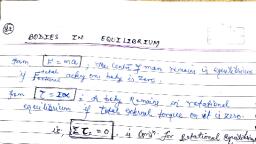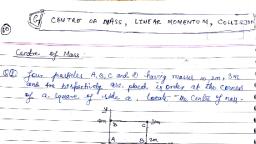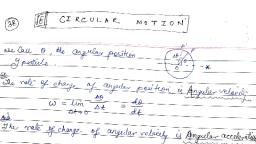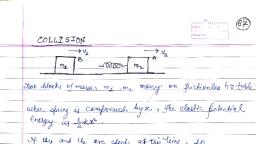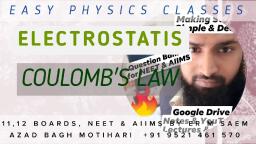Question 1 :
Two identical spheres having unequal, opposite charges are placed at a distance of {tex} 0.90 \mathrm { m } {/tex} apart. After touching them mutually, they are again placed at the same distance apart. Now they repel each other with a force of {tex} 0.025 \mathrm { N } {/tex}. Calculate the final charge on each of them.
Question 2 :
Two point charges {tex} ( + e ) {/tex} and {tex} ( - e ) {/tex} are kept inside a large metallic cube without touching its sides. Electric flux emerging out of the cube is :
Question 3 :
Two small identical balls P and Q each of mass 0.20g carry identical charges and are suspended by two threads of equal length. The balls position themselves at equilibrium such that the angle between the threads is 60{tex}\degree{/tex}. If the distance between the balls is 0.5m, find the charge on each ball. Take g = 9.8ms{tex}^{-2}{/tex}.
Question 4 :
The electrostatic potential energy of two point charges, {tex} 1 \mu \mathrm { C } {/tex} each, placed {tex} 1 \mathrm { m } {/tex} apart in air is :
Question 5 :
A body has a positive charge of {tex} 8 \times 10 ^ { - 19 } \mathrm { C } {/tex}. It has:
Question 6 :
In the given figure, a charge {tex} Q {/tex} is fixed. Another charge {tex} q {/tex} is moved along circular arc MN of radius {tex} r {/tex} around it, from the point {tex} M {/tex} to the point {tex} N {/tex} such that the length of the arc {tex} M N = l {/tex}. The work done in this process is :<br><img style='object-fit:contain' src="https://storage.googleapis.com/teachmint/question_assets/ISC%20-%20Class%2012/5f7c7dbd8073fe2c5706c723"><br>
Question 7 :
Electric charges {tex} + q _ { 1 } , - q _ { 1 } , + q _ { 2 } {/tex} and {tex} - q _ { 2 } {/tex} are placed in free space and {tex} S {/tex} is a spherical Gaussian surface. The electric flux passing over the surface {tex} S {/tex} is :<br><img style='object-fit:contain' src="https://storage.googleapis.com/teachmint/question_assets/ISC%20-%20Class%2012/5f7c7dbc46f7292c04edf376"><br>
Question 8 :
A metal sphere of radius {tex} 1 \mathrm { cm } , {/tex} can hold a charge of 1 coulomb.
Question 9 :
Relative permittivity of water is {tex} 81 . {/tex} If {tex} \varepsilon _ { W } {/tex} and {tex} \varepsilon _ { 0 } {/tex} are permittivities of water and vacuum respectively, then :
Question 10 :
A body has a positive charge of {tex} 8 \times 10 ^ { - 19 } \mathrm { C } {/tex}. It has:

